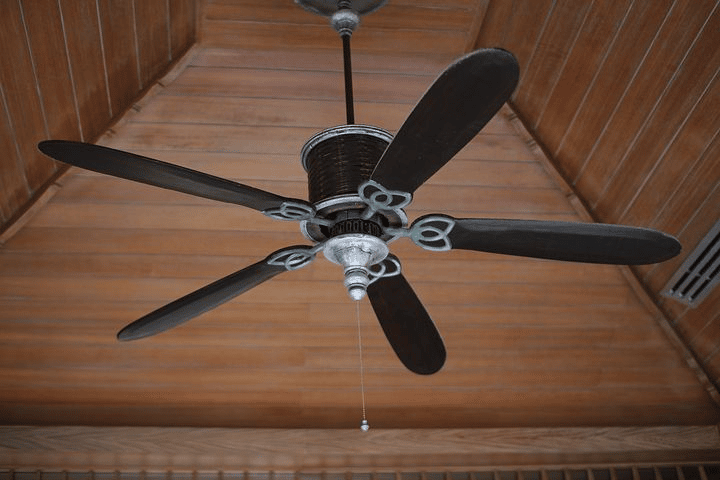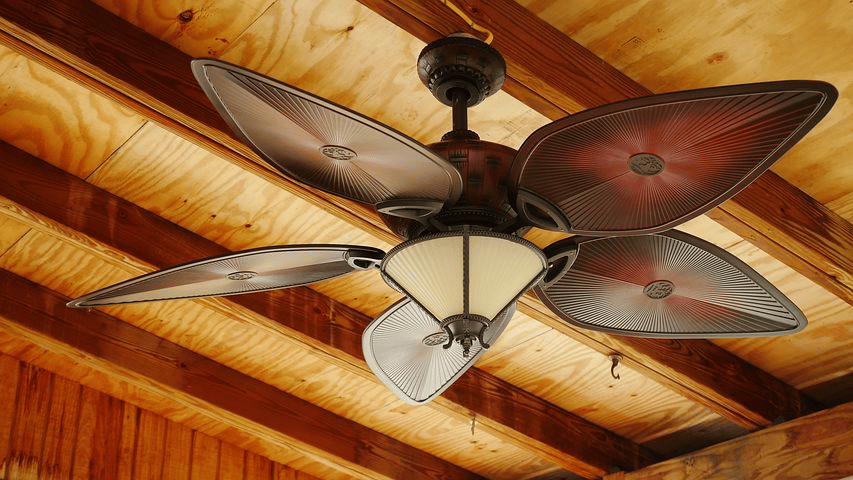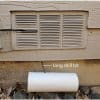A ceiling fan can make a room feel up to four degrees cooler without actually cooling anything down, and without the need to turn down the thermostat. You can even reverse the direction of the fan blades in the winter to push warm air down from the ceiling into the bottom half of the room, where it can keep you comfy. A ceiling fan is obviously a huge upgrade for your home, especially if you care about sustainability and minimizing your carbon footprint.
You don’t need a professional to install a ceiling fan, as long as you’ve already got a light fixture or a ceiling fan in place in the location where you want to put the new fan. Follow these steps to swap out your old fixture for a new fan.
Turn Off the Breaker Switch
You can’t do wiring work on a live circuit – you’ll electrocute yourself. Before you begin your fan installation, go to the electrical panel and turn off the breaker that controls the circuit you’ll be working on. Make sure the circuit is off by testing the lights in the room where you’ll be working.
Take Down the Existing Fixture
Now you can safely remove the existing fixture. Old ceiling fans should be taken down a piece at a time, as it’s easier and safer than trying to handle a whole, heavy fan. Remove the blades and the light fixture, then take down the fan motor, downrod, and ceiling mounting plate.
It’s usually much easier to take down an old light fixture. Remove the bulb cover and bulbs. This should reveal the screws that secure the light fixture to the mounting plate above. Undo these screws, pull the light fixture down carefully, and then disconnect the wiring connections that come out of the junction box. Make sure to remove the mounting plate and, if you’re hanging a fan in place of your light fixture, you might as well remove the junction box, too.
Install an Anchoring Brace in the Ceiling, If Needed
You may not need to put in a ceiling fan mounting brace if you’re replacing an old ceiling fan – there is likely one in your ceiling already, but shine a flashlight in there and check just to be sure. You also don’t need a fan brace if you’re able to anchor your fan directly to a ceiling joist. If you need a fan brace, grab an expanding metal fan brace that you can insert into the ceiling from the bottom and expand from below.
Attach a Fan-Rated Electrical Box to the Fan Brace or Joist
If you’re replacing a light fixture with a ceiling fan, you also need to replace the electrical junction box you were using with your light fixture. Replace it with a fan-rated, pancake electrical box. Anchor the new electrical box securely to the fan brace or joist. 
Hang the Fan Motor
Both indoor and outdoor ceiling fans are typically assembled the same way, but check your fan’s assembly instructions to make sure you’re doing it properly. When you assemble a fan motor on the floor, you’ll usually attach a downrod to the top of the motor housing and pull the wiring from the motor up through the end of the downrod. However, flush-mount fans may be assembled differently.
Attach the fan’s ceiling mounting plate to the electrical junction box and hang the fan motor from the ceiling mounting plate. There should be a hook on the ceiling mounting plate that will allow you to hang the fan motor to one side while you make the wiring connections. Match the black (hot) wire from the fan motor with the black wire from the ceiling, the white (neutral) wire with the white wire, and the green or bare (ground) wire with the green or bare wire. Wrap the green or bare wire inside the electrical box around the green ground screw, and then tighten the screw to secure the connection, before twisting the two ground wires together. Add wire nuts to the connections to secure them. Anchor the fan motor assembly to the ceiling mounting plate and screw the fan canopy in place.
Put on the Blades and the Light Fixture
Now you just need to put on the light fixture and blades. Some fan light fixtures have to be wired up just like the motors themselves, while other light fixtures just plug into the fan motor housing. Make sure you attach your fan blades so that each is an equal distance from the floor. Once you have everything attached, turn your power back on and see how well your new fan works!








